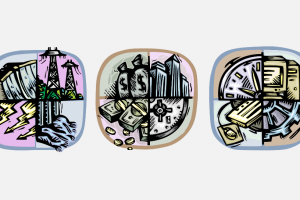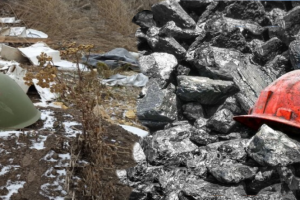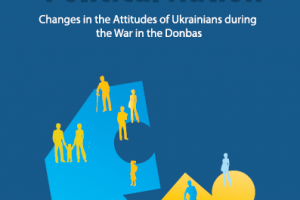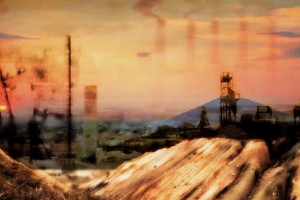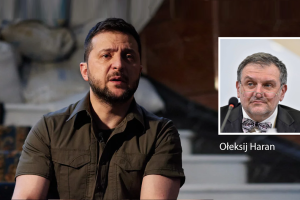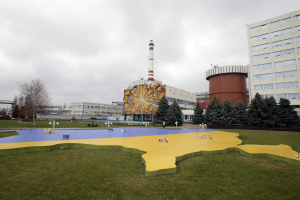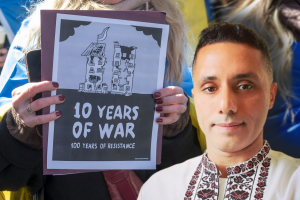Do not expect grassroots change to happen in Russia.
A popular phrase spoken only half-jokingly by the residents of Moscow goes like this, “Moscow ends, and Russia begins at the Sadovoye Koltso”. Sadovoye Koltso, or Garden Ring, is a ring road that encircles the downtown.
The inner city contains the most expensive and thought after real estate, offices of major domestic and foreign corporations, and governmental buildings. It is the heart of Moscow, where most foreign media offices used to be located – hardly a perfect place to capture the zeitgeist of an enormous country, especially on a limited budget. Next to the journalists live the elites, those lucky few who were able to afford a proper – mostly western – education, bribe their way through the compulsory military conscription, and eventually find a well-paid position at one of the international businesses with competitive pay.
Now imagine Sadovoye as a moat filled with “siloviki”, or the enforcers. This essentially turns the downtown into an elite or intellectual ghetto, where people can pretend they live in a free country as long as they stay within the bounds.
This ghetto enjoys the media’s attention, both domestic and foreign, especially when somebody gets beat up or apprehended. On other occasions, its dissatisfied residents are disproportionately represented when it comes to commentary or opinions on Russia’s agenda despite not influencing the governmental decision-making. It is a de-facto smokescreen, a civilized face Putin has learned to use to his advantage.
Over on the other side of the Sadovoye moat, a pit where Russian security forces are brandishing their batons begins the great unknown from whence the viral dashcam videos come from, and where a pound of sugar is valued greater than human life. Unfortunately, these two Russias do not mix up.
Beyond the capital’s lights are the towns and villages that have hardly enjoyed the economic benefits of capitalism and have never been required to integrate with the rest of the world. The great unknown – mistaken by many for a certain mysterious “Russian soul”, but in actuality made up of that limited access to information and lacking social mobility – now cheers with glee at every new corporation pulling out of Russia or oligarch falling from grace. The have-nots have finally lived long enough to see the wealthy suffer.
This population stratum is made up of those who have lost their role model with the breakup of the Soviet Union, only to be later picked up by Putin, who has used the all-too-familiar rhetoric to cement his support base. Over the span of 30 years, little effort was put into reaching out to the “outer” Russia, and the developments there went largely unnoticed by the foreign audience.
Thus, understanding what happened, or rather what did not, is the key to comprehending Russia’s newly found appreciation for the new Cold War and the widespread public support for invading Ukraine.
With the mounting sanctions, the media attention is yet again focused on the tip of the iceberg – the middle class. Those who appear relatable to the Western audience. In other words, the international community sees those who “suffer” from the closure of Starbucks and are deprived of other benefits of the civilization like Coke Zero and MasterCard. All while civilians are indiscriminately bombed across the border, in Russia, filled with righteous indignation, some videos go viral showing queues to get the last ever BigMac, capturing those who argue against punishing the innocent population for the crimes of a dictator.
While visible, it is vital to accept that the Russian liberal minority and the middle class hold no weight when it comes to Putin’s decisions. Over the years, this stratum has been neutered as a viable political actor, and turned into a convenient “Potemkin village”, or a facade with no substance beyond the flashy sign.
There is little doubt that even the greatest economic sanctions will not spark a popular uprising in Moscow or elsewhere. On the contrary, the decades of unsuccessful protest have instilled an almost Pavlovian reaction to being beat among the so-called progressives in the intellectual ghettos – to stop resisting and proceed to “autozak”, the Russian police bus.
Meanwhile, on short notice, the rest of Russia has joined the epic battle advertised by state TV.
Framed as a literal crusade against the collective West, in many ways, the full-scale invasion of Ukraine and its consequences have helped to consolidate the easily-susceptible population of smaller towns and townships – the primary source of the military manpower and support base of the president. The “social justice”, Russian-style, only fuels the conviction.
No, change will not be at the initiative of locals. And while the woes of liberals in Moscow are made public, Kremlin – a surreptitious ghetto within a ghetto – is where the future will be decided.

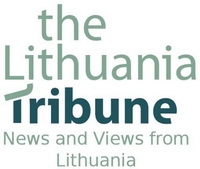 For
For 